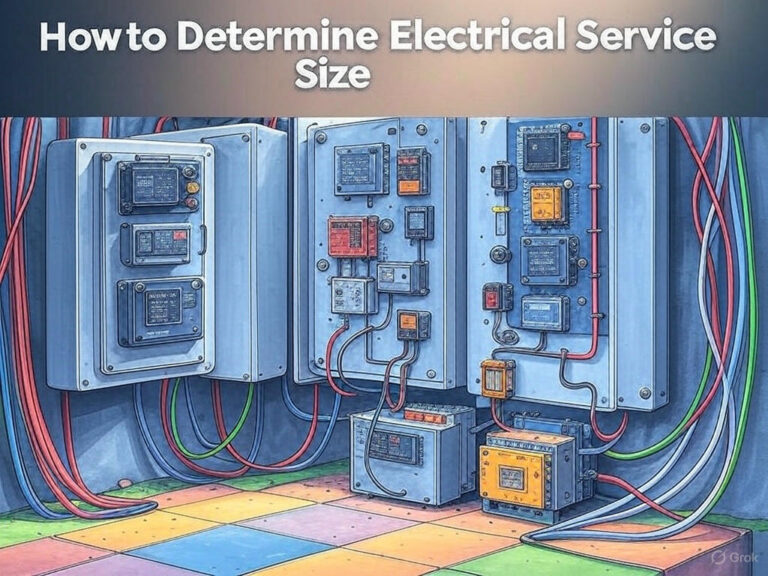Circuit Breaker Commissioning Tests: Best Guide
Circuit breaker commissioning tests are critical to ensuring the proper operation, safety, and reliability of a circuit breaker before it becomes operational in an electrical system. These tests verify the performance of the breaker under various conditions, ensuring that it meets design specifications and operates as intended during real-world scenarios. This article covers detailed aspects of circuit breaker commissioning tests, providing a comprehensive guide for engineers and technicians.

Table of Contents
Table of Contents
Importance of Circuit Breaker Commissioning Tests
Circuit breakers serve as a vital component in electrical systems, protecting equipment and personnel from overcurrents, short circuits, and other electrical faults. Proper commissioning tests ensure the following:
- Safety: Prevent accidents caused by malfunctioning breakers.
- Reliability: Ensure consistent performance during faults.
- Compliance: Adhere to industry standards and regulations.
- System Integrity: Avoid system-wide failures due to breaker malfunctions.
Learn more about Circuit Breaker Testing Requirements to understand the foundational testing needs for circuit breakers.
Key Circuit Breaker Commissioning Tests
1. Visual Inspection
Visual inspection is the first step in commissioning tests. It involves checking the breaker for physical damage, loose connections, proper labeling, and compliance with design standards.
- Inspect external and internal components for defects.
- Verify the breaker is installed per the manufacturer’s guidelines.
- Check for corrosion, dirt, and moisture that could affect performance.
Use our online tool for free Circuit Breaker Size Calculator
2. Mechanical Operations Test
This test verifies the mechanical functionality of the circuit breaker by simulating open and close operations.
- Perform manual and motorized operations to ensure smooth functionality.
- Check alignment and travel of moving parts.
- Record the number of operations to ensure it meets the manufacturer’s specified limits.
Explore Circuit Breaker Test Button to understand the functionality of manual testing mechanisms.
3. Contact Resistance Measurement
Low resistance across breaker contacts indicates good electrical conductivity and minimal power loss.
- Use a micro-ohmmeter to measure contact resistance.
- Compare results with manufacturer specifications.
- High resistance may indicate worn-out contacts or improper alignment.
4. Insulation Resistance Test
This test ensures the insulation between components can withstand operating voltage without breakdown.
- Use an insulation resistance tester (megger) to measure resistance between contacts, phases, and ground.
- Ensure results comply with industry standards such as IEEE or IEC.
5. Timing Test
The timing test evaluates the speed at which the breaker operates under fault conditions.
- Use a circuit breaker analyzer to measure opening, closing, and reclosing times.
- Ensure timing matches manufacturer specifications.
- Improper timing may indicate mechanical wear or control circuit issues.
Learn more about Circuit Breaker Analyzer Testing Equipment for advanced testing tools.
Advanced Testing for Circuit Breakers
1. Dielectric Withstand Test
This test applies a high voltage across breaker insulation to assess its ability to handle overvoltages.
- Perform the test using an AC or DC high-potential tester.
- Monitor for any breakdown or leakage current during the test.
2. Dynamic Contact Resistance Test
Dynamic contact resistance testing (DCRM) measures resistance during contact motion, providing insights into the condition of moving contacts.
- Analyze contact erosion, wear, and alignment issues.
- Use results to predict maintenance schedules.
3. Secondary Injection Test
This test evaluates the breaker’s trip unit by injecting simulated fault currents into its secondary circuitry.
- Use a secondary current injection kit.
- Verify the trip unit’s response to overcurrent, short-circuit, and other fault conditions.
Explore Circuit Breaker Testing Methods for an in-depth look at different testing techniques.
Steps for Circuit Breaker Commissioning Tests
- Prepare the Equipment: Ensure all necessary testing tools are calibrated and ready.
- Isolate the Circuit Breaker: Disconnect it from live circuits for safe testing.
- Perform Visual and Mechanical Checks: Inspect and operate the breaker to ensure it is in good condition.
- Conduct Electrical Tests: Perform insulation resistance, contact resistance, timing, and other required tests.
- Analyze Results: Compare test data with manufacturer and industry standards.
- Document Findings: Maintain records for future maintenance and compliance audits.
Learn about Circuit Breaker Testing Procedure for a step-by-step guide to testing breakers.
Common Issues Identified During Testing
- High Contact Resistance: Indicates worn-out or misaligned contacts.
- Slow Operating Times: May result from mechanical wear or control circuit faults.
- Low Insulation Resistance: Suggests degraded insulation or moisture ingress.
- Inconsistent Tripping: Points to issues with the trip unit or control wiring.
Preventative Measures
- Regular maintenance to replace worn parts.
- Periodic calibration of testing equipment.
- Monitoring operational performance.
Discover Top Circuit Breaker Testing Companies in USA to find professional services for reliable testing.
Standards for Circuit Breaker Testing
Testing must align with recognized industry standards to ensure consistency and reliability. Key standards include:
- IEEE C37 Series: Guides for testing and maintenance of circuit breakers.
- IEC 62271-100: High-voltage circuit breaker testing standards.
- ANSI C37.09: Standards for low-voltage circuit breaker testing.
Read Circuit Breaker Testing Requirements to understand industry compliance needs.
Conclusion
Circuit breaker commissioning tests are essential for ensuring that the breaker performs reliably under fault conditions, protecting both equipment and personnel. Proper testing not only improves system safety but also extends the lifespan of the breaker. By following industry standards and using advanced tools like circuit breaker analyzers, engineers can ensure efficient and accurate testing.
Whether you are an experienced professional or a beginner in the field, staying updated on Circuit Breaker Testing Methods and utilizing resources like Circuit Breaker Testing Procedure will enhance your understanding and implementation of commissioning tests.
Subscribe our Newsletter to get the latest updates in Electrical Engineering.
#CircuitBreaker, #CommissioningTests, #ElectricalEngineering, #PowerSystems, #ElectricalTesting, #Switchgear, #ElectricalSafety, #HighVoltage, #LowVoltage, #ProtectionRelays, #BreakerTesting, #ElectricalMaintenance, #Substation, #ElectricalEquipment, #ElectricalInspection





